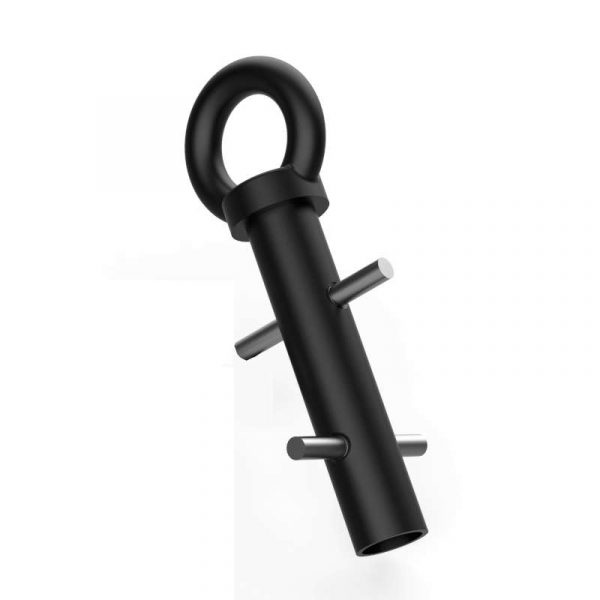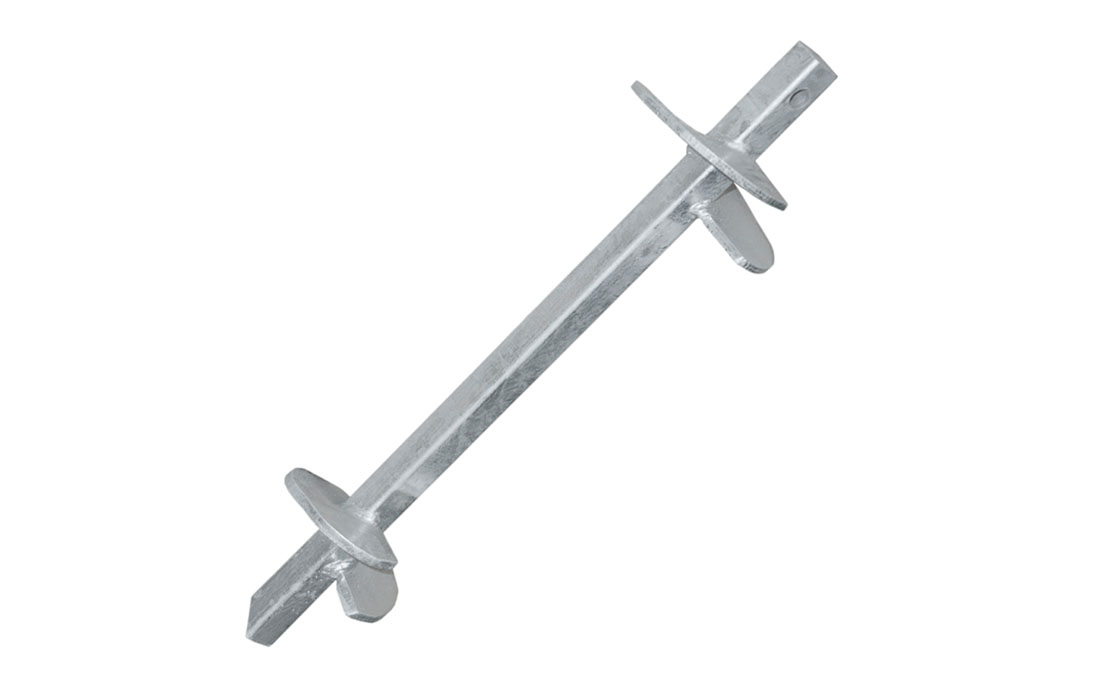Exactly How Heavy-Duty Earth Anchors Work: A Comprehensive Overview to Soil Anchoring Solutions
Sturdy Earth supports play a vital duty in giving security and support in different building applications. By installing deeply into the ground, they resist side and upright pressures efficiently. Various types of anchors provide to different dirt problems, making them versatile. Understanding their auto mechanics and installment techniques is necessary for maximizing performance. What elements affect their efficiency, and exactly how do they contrast to traditional techniques? The solutions might surprise you.
Comprehending Durable Earth Anchors
Sturdy Earth supports work as vital parts in different building and landscape design projects, providing stability and assistance in challenging dirt problems. These supports operate by being installed into the ground, where they resist upright and side forces. Their design enables secure add-on to frameworks, guaranteeing they stay anchored against dirt motion or external loads.The effectiveness of heavy-duty Earth anchors mostly depends on the kind of soil and the anchor's installment deepness. Correct installment techniques are critical, as they determine the support's holding ability. Environmental elements, such as wetness and freeze-thaw cycles, can likewise affect performance.These anchors are frequently utilized in applications ranging from securing fencings and keeping wall surfaces to stabilizing momentary frameworks during negative climate problems. Recognizing the concepts behind sturdy Earth supports is necessary for professionals seeking to enhance the toughness and safety of their jobs.
Kinds of Heavy-Duty Earth Anchors
Numerous sorts of durable Earth anchors are developed to meet specific needs based upon soil conditions and task demands. Helical anchors, including screw-like blades, work in softer dirts, offering high lots abilities and very easy installation. Driven anchors, which are hammered right into the ground, appropriate for rough surfaces and supply prompt lots assistance. Tie-back anchors are typically used in maintaining wall applications, permitting lateral assistance by anchoring right into the ground at an angle. An additional type is the cast-in-place support, suitable for concrete applications, as they are integrated into structures for enhanced security. Finally, dirt screw anchors are functional choices that can be used in various dirt types, supplying trustworthy tension and compression abilities. Each type serves distinct applications, making certain security and security in building and landscape design jobs. Understanding these options enables for educated choices in picking the suitable Earth anchoring remedy.
The Mechanics of Soil Anchoring

Comprehending the technicians of dirt anchoring needs an assessment of different sorts of Earth anchors and their setup strategies. Each support kind presents special characteristics that affect its efficiency in various dirt problems. Correct installation methods are important for maximizing the securing system's security and performance.
Kinds Of Earth Anchors
Earth anchors, important parts in dirt anchoring systems, can be found in several types, each created for certain applications and dirt conditions. The most typical kinds consist of screw anchors, which are twisted right into the ground, providing strong side resistance. Helical anchors feature blades that allow for efficient installation in various soil types, making them appropriate for both long-term and temporary applications. Driven anchors, commonly made from steel, are hammered into the soil and are efficient in rough or thick atmospheres. Auger supports use a helical layout to facilitate installment in softer soils. Finally, plate supports include a level plate buried horizontally, distributing tons over a larger area, ideal for applications needing high lots capabilities in cohesive dirts.
Installation Strategies Clarified
Appropriate installment strategies are vital for the effectiveness of dirt anchoring systems. The procedure typically starts with site evaluation, confirming the chosen place can support the anchor's lots. After determining the appropriate support kind, proper opening depth and angle need to be established. The installation involves driving the support into the ground using specialized tools, such as hydraulic or hands-on vehicle drivers, to accomplish best embedment. Post-installation, tensioning the support is essential to ensure security; this is usually confirmed with tons testing. Additionally, bordering soil problems must be checked to avoid variation. Adhering to these strategies not just boosts the anchor's efficiency but additionally extends its life-span, providing trusted assistance for numerous applications.
Applications of Heavy-Duty Earth Anchors
While sturdy Earth anchors are frequently connected with construction and landscape design, their adaptability reaches a range of applications throughout different sectors. In civil engineering, they supply crucial support for keeping wall surfaces, making certain security in areas susceptible to dirt erosion. The aquatic industry utilizes these supports for safeguarding docks and marinas, preventing activity brought on by trends and currents. Additionally, in the telecom sector, heavy-duty Earth anchors are considerable for stabilizing cell towers and other tall structures against wind forces. Agricultural applications also profit, as these supports can safeguard frameworks like greenhouses and animals fencing, ensuring they withstand extreme climate condition. In addition, in eco-friendly power jobs, such as wind farms, Earth anchors play a crucial role in securing turbine structures, boosting total check safety and efficiency. This wide variety of applications highlights the adaptability and reliability of durable Earth anchors across different fields.
Advantages Over Standard Anchoring Methods
Standard anchoring techniques have long been depended upon for security, heavy-duty Earth anchors supply considerable advantages that boost efficiency and effectiveness. One significant advantage is their superior load-bearing capacity, which enables them to withstand better forces without failing. This strength makes them ideal for requiring applications, such as in construction and utility installations.Additionally, heavy-duty Earth anchors are made for deeper setup, supplying greater stability in numerous soil conditions, including sandy Manta Ray anchors or loosened soils. Their resistance to deterioration and environmental elements guarantees a much longer life-span and minimized maintenance costs compared to standard methods.Moreover, these anchors can be mounted with minimal disturbance to the surrounding area, protecting the integrity of the landscape. In general, sturdy Earth supports offer a reliable and reliable remedy for anchoring needs, surpassing the restrictions usually associated with conventional anchoring methods.
Setup Process and Ideal Practices
The setup process for soil securing solutions begins with thorough prep work and site assessment to guarantee peak efficiency. Following this, a detailed installation guide gives clear guidelines for reliable implementation (tensile load anchors). Complying with these best practices is crucial for achieving reputable and lasting anchoring outcomes
Preparation and Site Assessment
Reliable prep work and thorough website examination are vital actions in the setup of dirt anchoring options. Prior to installment, the soil kind need to be analyzed to determine its bearing capability and suitability for anchoring. Performing a geotechnical study can offer important details concerning dirt composition, dampness levels, and possible ground activity. Additionally, identifying existing structures, plants, and energies is necessary to avoid disturbance during setup. The location must be free from debris and barriers to assure secure access for equipment. Climate condition ought to likewise be kept track of, as damaging conditions can influence both safety and setup efficacy. By carefully preparing the website and evaluating all relevant factors, the chance of successful anchor performance is considerably increased.
Step-by-Step Installation Overview
A thorough installation process is essential for achieving perfect performance of dirt anchoring services. The installation starts with picking the ideal anchor kind and assuring the website is clear of debris. Next, correct hole positioning is identified based on load demands. When the area is developed, holes are pierced to the specified deepness and diameter using the appropriate devices. The anchor is then inserted into the opening, making certain it is straightened appropriately. After securing the anchor, soil is backfilled and compacted to improve security. It is necessary to comply with maker standards throughout the procedure. A post-installation inspection confirms that the supports are effectively positioned and functioning as meant, providing dependable support for the designated application.

Maintenance and Inspection of Earth Anchors
Normal maintenance and examination of Earth anchors are crucial for ensuring lasting performance and stability. Routine checks allow for the early detection of concerns such as deterioration, loosening, or dirt movement. Inspectors should try to find signs of rust or destruction on the anchor elements, specifically at the connection points. Additionally, the surrounding dirt must be evaluated for erosion or modifications in dampness content, which can influence anchor effectiveness.It is suggested to establish a routine evaluation routine, ideally at the very least when a year, relying on environmental conditions. Throughout examinations, all noticeable components ought to be cleaned to remove dirt or particles that might conceal potential troubles. Any type of indications of distress, such as turning frameworks or unusual settling, must trigger instant examination. Appropriate paperwork of inspections can aid in tracking support performance over time and assist in prompt maintenance actions, making see this site certain the anchors remain trustworthy and practical.
Regularly Asked Questions
What Materials Are Heavy-Duty Earth Anchors Usually Made From?
Durable Earth anchors are generally constructed from durable products such as galvanized steel or stainless steel, making sure strength and resistance to deterioration. These products offer durable support and security in various dirt conditions and applications.
Exactly How Do Dirt Problems Impact Anchor Performance?
Dirt problems substantially influence support performance. Factors such as soil kind, moisture material, and compaction affect the support's grip and security, with natural dirts usually giving far better resistance than sandy or loosened soils, influencing overall effectiveness.
Can Heavy-Duty Earth Anchors Be Recycled After Removal?
Durable Earth supports can be recycled after removal, offered they are examined for damages and wear. Proper cleaning and maintenance improve their long life, making certain effective performance in succeeding setups when problems permit risk-free reinstallation.
What Are the Ecological Effects of Utilizing Earth Anchors?
The ecological influences of using Earth supports consist of possible soil disturbance, disruption of regional ecological communities, and possible contamination of groundwater. However, if used sensibly, their advantages often outweigh these issues, promoting stability in different applications.
Just how Do I Pick the Right Support for My Project?
